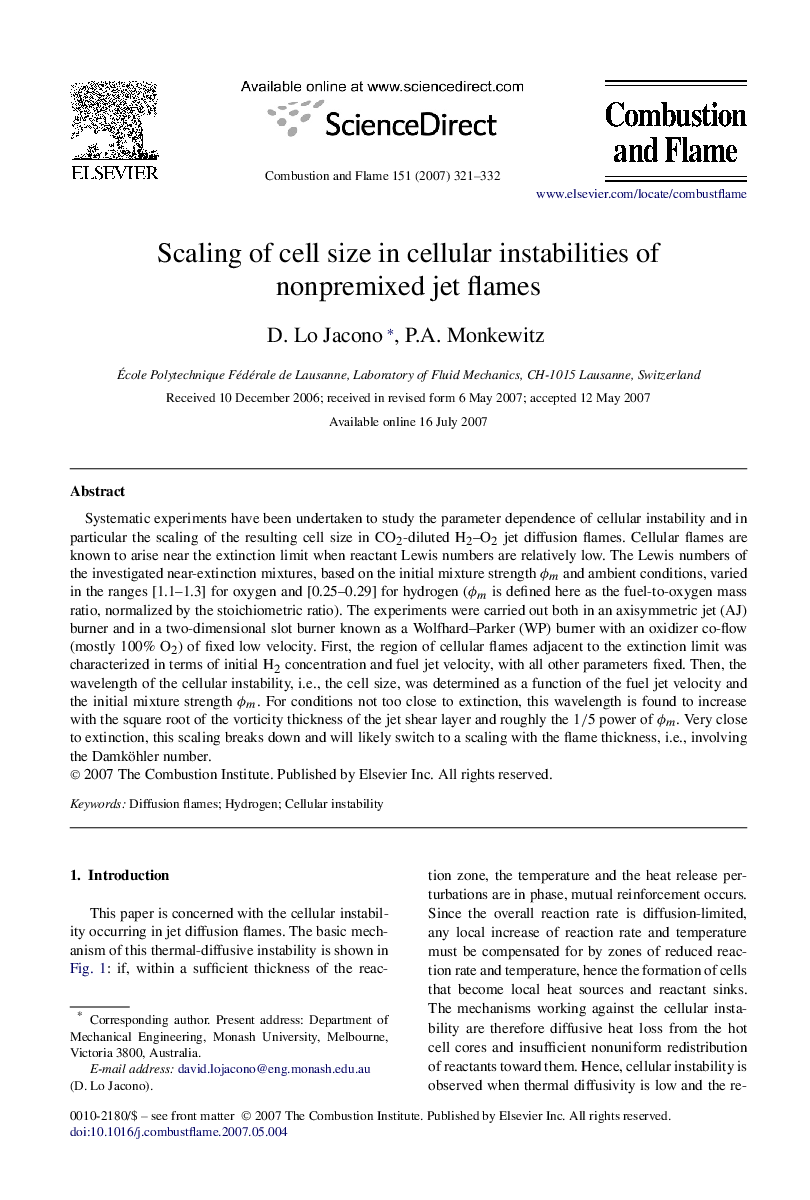| Article ID | Journal | Published Year | Pages | File Type |
|---|---|---|---|---|
| 170108 | Combustion and Flame | 2007 | 12 Pages |
Systematic experiments have been undertaken to study the parameter dependence of cellular instability and in particular the scaling of the resulting cell size in CO2-diluted H2–O2 jet diffusion flames. Cellular flames are known to arise near the extinction limit when reactant Lewis numbers are relatively low. The Lewis numbers of the investigated near-extinction mixtures, based on the initial mixture strength ϕmϕm and ambient conditions, varied in the ranges [1.1–1.3] for oxygen and [0.25–0.29] for hydrogen (ϕmϕm is defined here as the fuel-to-oxygen mass ratio, normalized by the stoichiometric ratio). The experiments were carried out both in an axisymmetric jet (AJ) burner and in a two-dimensional slot burner known as a Wolfhard–Parker (WP) burner with an oxidizer co-flow (mostly 100% O2) of fixed low velocity. First, the region of cellular flames adjacent to the extinction limit was characterized in terms of initial H2 concentration and fuel jet velocity, with all other parameters fixed. Then, the wavelength of the cellular instability, i.e., the cell size, was determined as a function of the fuel jet velocity and the initial mixture strength ϕmϕm. For conditions not too close to extinction, this wavelength is found to increase with the square root of the vorticity thickness of the jet shear layer and roughly the 1/5 power of ϕmϕm. Very close to extinction, this scaling breaks down and will likely switch to a scaling with the flame thickness, i.e., involving the Damköhler number.
